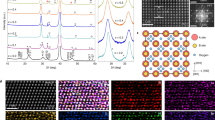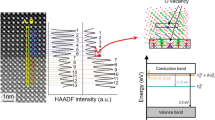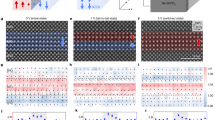Abstract
Dielectric electrostatic capacitors1, due to their ultrafast charge-discharge capability, are attractive for high power energy storage applications. Along with ultrafast operation, on-chip integration can enable miniaturized energy storage devices for emerging autonomous microelectronics and microsystems2-5. Additionally, state-of-the-art miniaturized electrochemical energy storage systems – microsupercapacitors and microbatteries – currently face safety, packaging, materials, and microfabrication challenges preventing on-chip technological readiness2,3,6, leaving an opportunity for electrostatic microcapacitors. Here we report record-high electrostatic energy storage density (ESD) and power density (PD) in HfO2- ZrO2-based thin film microcapacitors integrated on silicon, through a three-pronged approach. First, to increase intrinsic energy storage, atomic-layer-deposited antiferroelectric HfO2-ZrO2 films are engineered near a field-driven ferroelectric phase transition to exhibit amplified charge storage via the negative capacitance effect7-12, which enhances volumetric-ESD beyond the best-known back-end-of-the-line (BEOL) compatible dielectrics (115 J-cm-3)13. Second, to increase total energy storage, antiferroelectric superlattice engineering14 scales the energy storage performance beyond the conventional thickness limitations of HfO2-ZrO2-based (anti)ferroelectricity15 (100-nm regime). Third, to increase storage-per-footprint, the superlattices are conformally integrated into three-dimensional capacitors, which boosts areal-ESD (areal-PD) 9-times (170-times) the best-known electrostatic capacitors: 80 mJ-cm-2 (300 kW-cm-2). This simultaneous demonstration of ultrahigh energy- and power-density overcomes the traditional capacity-speed trade-off across the electrostatic-electrochemical energy storage hierarchy1,16. Furthermore, integration of ultrahigh-density and ultrafast-charging thin films within a BEOL-compatible process enables monolithic integration of on-chip microcapacitors5, which can unlock substantial energy storage and power delivery performance for electronic microsystems17-19.
This is a preview of subscription content, access via your institution
Access options
Access Nature and 54 other Nature Portfolio journals
Get Nature+, our best-value online-access subscription
$29.99 / 30 days
cancel any time
Subscribe to this journal
Receive 51 print issues and online access
$199.00 per year
only $3.90 per issue
Rent or buy this article
Prices vary by article type
from$1.95
to$39.95
Prices may be subject to local taxes which are calculated during checkout
Similar content being viewed by others
Author information
Authors and Affiliations
Corresponding authors
Supplementary information
Supplementary Information
This file contains Supplementary Tables S1-4; Supplementary Figures S1-11; Supplementary Text and Supplementary References.
Rights and permissions
About this article
Cite this article
Cheema, S.S., Shanker, N., Hsu, SL. et al. Giant energy storage and power density negative capacitance superlattices. Nature (2024). https://doi.org/10.1038/s41586-024-07365-5
Received:
Accepted:
Published:
DOI: https://doi.org/10.1038/s41586-024-07365-5
Comments
By submitting a comment you agree to abide by our Terms and Community Guidelines. If you find something abusive or that does not comply with our terms or guidelines please flag it as inappropriate.



